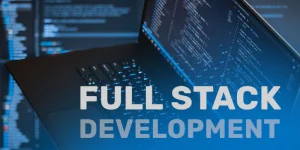
In today’s digital landscape, full stack development and graphic design are increasingly intertwined. While graphic design concentrates on producing aesthetically appealing and intuitive user interfaces, full stack development works on both the front end and back end of web applications. When these two disciplines merge effectively, they produce cohesive, functional, and aesthetically pleasing applications. This blog explores the vital role of graphic design in full stack development projects, highlighting how design principles contribute to user experience, functionality, and overall project success. Full Stack Developer Course in Chennai offers valuable insights and hands-on experience for mastering these integrated skills.
Full stack development encompasses both client-side (front end) and server-side (back end) development. Full stack developers are skilled in various technologies and frameworks to build robust and scalable web applications. They work on the entire tech stack, including databases, servers, and the user interface. While their primary focus is often on functionality and performance, incorporating graphic design principles into their work can significantly enhance the final product.
The Intersection of Graphic Design and Full Stack Development
Graphic design is not just about making things look good; it’s about creating effective and functional visual solutions. In the context of full stack development, graphic design plays several crucial roles:
-
User Interface (UI) Design
Graphic design is fundamental to creating a user-friendly interface. UI design involves arranging visual elements like buttons, menus, and icons in a way that enhances usability. For full stack developers, understanding UI design principles ensures that the front end of the application is intuitive and accessible. Effective UI design can improve user satisfaction, reduce bounce rates, and increase overall engagement with the application.
-
User Experience (UX) Design
UX design focuses on how users interact with an application. It encompasses the entire user journey, from initial contact to task completion. Graphic designers use techniques such as wireframing, prototyping, and user testing to create an optimal user experience. For full stack developers, collaborating with graphic designers on UX can help ensure that the application is not only functional but also easy to navigate and enjoyable to use.
-
Consistency in Visuals and Brand Identity
Graphic design plays a significant role in establishing and maintaining brand identity. Consistent use of colors, fonts, and visual elements reinforces a brand’s image and makes the application recognizable. Full stack developers need to work closely with graphic designers to implement these visual elements consistently throughout the application. This consistency helps build trust with users and strengthens the brand’s presence. For those looking to enhance their skills, Graphic Design Courses in Chennai provide valuable training in these essential design principles.
-
Responsive Design
With the increasing use of mobile devices, responsive design has become crucial. Graphic designers create responsive layouts that adapt to different screen sizes and devices. Full stack developers must ensure that these designs are effectively implemented across various platforms. By collaborating with graphic designers on responsive design, developers can create applications that provide a seamless experience on desktops, tablets, and smartphones.
-
Visual Feedback and Interaction Design
Visual feedback refers to the design elements that provide users with feedback on their actions, such as button hover effects or loading indicators. Interaction design involves creating engaging and interactive elements that enhance user engagement. Graphic designers play a key role in designing these interactive elements, while full stack developers implement them. Effective visual feedback and interaction design contribute to a more dynamic and responsive user experience.
Best Practices for Integrating Graphic Design in Full Stack Development
-
Collaborate Early and Often
Collaboration between full stack developers and graphic designers should begin early in the project. By involving designers from the start, developers can better understand design goals and ensure that technical constraints are considered. Regular communication throughout the project helps align design and development efforts and address any issues promptly.
-
Prioritize User-Centered Design
Both graphic design and full stack development should prioritize the user’s needs and preferences. Conduct user research, gather feedback, and test designs with real users to ensure that the application meets their expectations. Incorporate user feedback into both the design and development processes to create a more effective and user-friendly product.
-
Maintain Visual Consistency
Consistency in visual design is crucial for creating a cohesive user experience. Ensure that design elements such as colors, fonts, and icons are used consistently throughout the application. Full stack developers should work closely with graphic designers to implement these elements accurately and maintain visual consistency across all pages and components. Full Stack Developer Course Near Me offers valuable training to help achieve these goals effectively.
-
Optimize for Performance
While graphic design enhances the visual appeal of an application, it’s important to balance aesthetics with performance. Optimize images, use efficient coding practices, and minimize the use of heavy design elements that could slow down the application. Full stack developers should collaborate with designers to ensure that design choices do not negatively impact performance.
Graphic design plays a critical part in full stack development projects, ensuring that apps are not only functional but also visually appealing and user-friendly. By integrating graphic design principles into the development process, full stack developers can enhance user experience, maintain visual consistency, and build stronger brand identities. Effective collaboration between developers and designers is key to achieving these goals and delivering a product that meets both technical and aesthetic standards. As the digital landscape continues to evolve, the synergy between full stack development and graphic design will remain essential for creating innovative and engaging applications. Graphic Design Online Course can provide valuable skills to support this integration effectively.
